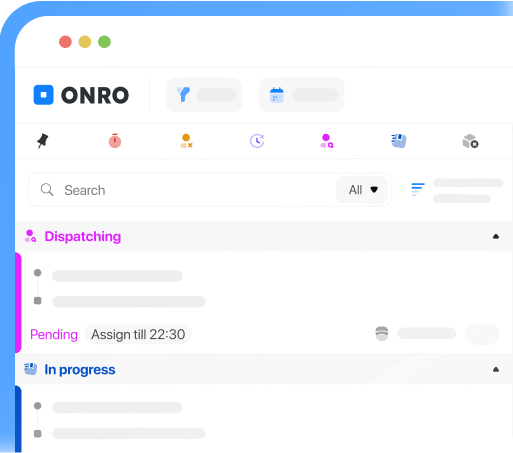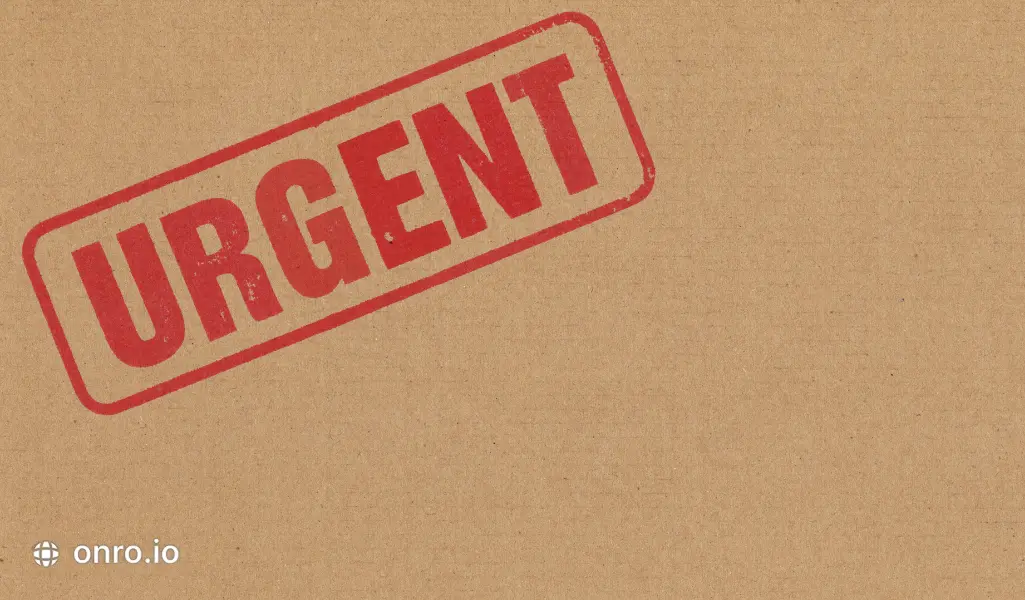Courier management and delivery systems have been elevated in many different ways to ensure customers always receive orders on time. Product quality, customer service, or branding are not the only factors in keeping customers happy. Time is everything, and businesses understand it very well. Customers often plan online shopping around the business’s delivery system, which is why companies use different types of courier services like urgent delivery to meet the growing demand for fast deliveries.
Urgent delivery is a type of delivery service designed to prioritize the delivery of special goods or items. Initially, urgent delivery was applied to medical supplies, but now, it goes beyond that. Same-day, next-day, direct, and urgent delivery services are all developed with the same goal in mind—to deliver goods as fast as possible. But they use different methods and are targeted at different businesses.
If your business deals with time-critical deliveries, this post will guide you on what urgent delivery is and how to efficiently implement it in your logistics solutions.
Try Onro for Free
Get your free access to the Onro Fully White-label Courier Software.
Understanding Urgent Delivery — Key Characteristics
Although the term is literal, urgent delivery is not just about speed. Think of urgent delivery as a means to meet critical or even vital deadlines. The service is used when businesses or their clients cannot simply afford delays in delivery. In urgent delivery, every minute counts, and failure to deliver at a specific time can cause notable disruptions on both ends.
How is urgent delivery meeting critical deadlines? Well, compared to traditional shipping systems, urgent delivery systems are route-optimized, direct shippings with lesser in-route stops. Drivers in urgent delivery are also assigned with fewer items so that they can focus on time-critical deliveries rather than quantity of deliveries.
Now, we do understand that critical deadlines are the reason why urgent delivery was developed in the first place, but now, it’s not the only reason for its growing demand.
Behind the Growing Demand for Urgent Delivery
As mentioned earlier, fast delivery has become a key factor in keeping customers happy. Same-day or next-day delivery used to be a luxury when shopping online, they are now merely a standard customer expectation. Meeting this expectation is the reason behind the growing demand for urgent logistics solutions.
ECDB also offers statistical data to back this theory: the average time customers are willing to wait for their online orders fell from 2.36 days in 2022 to 2.15 days in 2023. Surprisingly, 48% of global customers would rather urgent delivery than cheap delivery.
This growing demand puts high pressure on logistics and courier companies to ensure quick, error-free delivery services while maintaining reliability. While urgent delivery is expected from almost all businesses, some can benefit from the logistics solution far better than others.
Industries that Benefit Most From Urgent Delivery
Many companies rely on fast delivery systems in order to keep operations running smoothly. Let’s take a look at some of these industries:
Healthcare
One of the industries depending most on urgent delivery services is healthcare. Hospitals and clinics need fast deliveries of medical equipment, medication, and also lap samples and supplies. These items are vital and need to be transported as fast as possible since they deal with diagnosis and treatment.
Legal Services
In the legal industry, law firms rely heavily on fast delivery. They use courier services to transport time-sensitive legal documents. Contracts, filings, and critical paperwork need to reach their destinations on time to avoid penalties or delay legal processes.
Retail and E-commerce
The highest customer demand for fast delivery is probably from the retail and e-commerce industries. Customers not only expect instant delivery like same-day delivery, but they also need fast delivery on rush orders or emergencies, like an item return or exchange. These orders usually get even higher during peak seasons like holidays or sale promotions.
Food and Beverage
The food and beverage industry has been deeply affected by qCommerce, the opportunity to go online and serve customers even when they are not in-house raises the customer base for restaurants, catering services, and grocery markets. Because of that, they need fast delivery services to ensure they can maintain the quality of perishable goods and meet customer demands for on-time delivery.
Many other industries like IT and technology are also developing urgent delivery services to ensure all operations are smooth sailing and not interrupted by delivery delays. Some of the ways industries implement fast delivery is using same-day, next-day, or urgent delivery. But what are these methods and how do they differ?
Differences Between Fast Delivery Systems
There are several different types of fast delivery included in logistics solutions. While they all aim to reduce delivery time, they still differ in how they operate. Let’s break them down and see how they compare to urgent delivery:
Same-Day Delivery
- Orders are delivered on the same day they are placed.
- Usually happens within business hours.
- Ideal for customers who need their order quickly but are not in a rush.
Next-Day Delivery
- Orders are delivered the day after being shipped.
- More affordable compared to other fast delivery options.
- Less immediate than other fast delivery options.
Urgent Delivery
- Orders are delivered in the fastest time possible.
- Usually takes a few hours and is reserved for high-priority shipments.
- Happens outside the regular shipment schedules to meet critical deadlines.
In a way, we could say that urgent delivery is quite similar to same-day delivery, with the difference that meeting the delivery time is highly critical in the former.
Implementing Urgent Delivery — What to Consider
Knowing the basic principles of urgent delivery does not mean you can easily implement it in your courier systems. There are several key factors you need to consider to use urgent delivery services efficiently:
Infrastructure and Staff: The most essential factor in successfully delivering time-sensitive parcels is having the right resources. That means having a reliable number of vehicles and staff, most importantly drivers, that can handle time-sensitive deliveries.
Cost Management: Offering urgent delivery comes at a premium price to cater to the additional resources and faster turnaround required. The key here is balancing affordability and profitability. So, carefully calculate driver wages, fuel costs, and any potential surcharges.
Technology: In order to effectively manage urgent deliveries without overwhelming yourself or your staff, you need advanced courier management software. The right platform helps you with tasks that are highly essential for meeting tight delivery deadlines, including route optimization, real-time tracking, and automated dispatching. Investing in a courier management software can help smoothly run operations, reduce manual processes and errors, and improve delivery accuracy.
Onro — Support Urgent Deliveries
By now, you know all about urgent deliveries and how to handle them. That means you also know that just relying on fast drivers doesn’t do the job—you need a well-coordinated system. That’s why advanced software like Onro exists. The platform offers features such as assigning and dispatching, driver management, order management, POD and COD, and many more.
Onro can also help you communicate with customers effectively with the delivery notification feature and provide up-to-the-minute status updates for increased transparency and trust-building. Also, Onro’s on-demand delivery software is designed to help businesses like you with urgent delivery operations to ease out the process for you and improve overall service quality!
Try Onro for Free
Get your free access to the Onro Fully White-label Courier Software.




